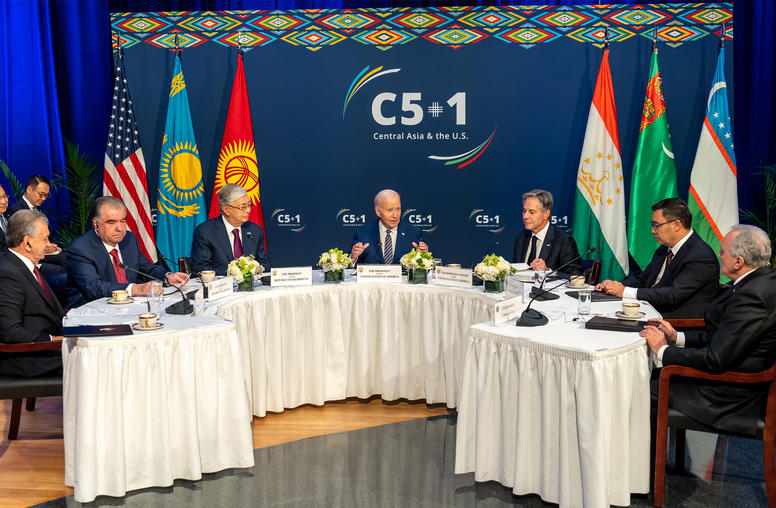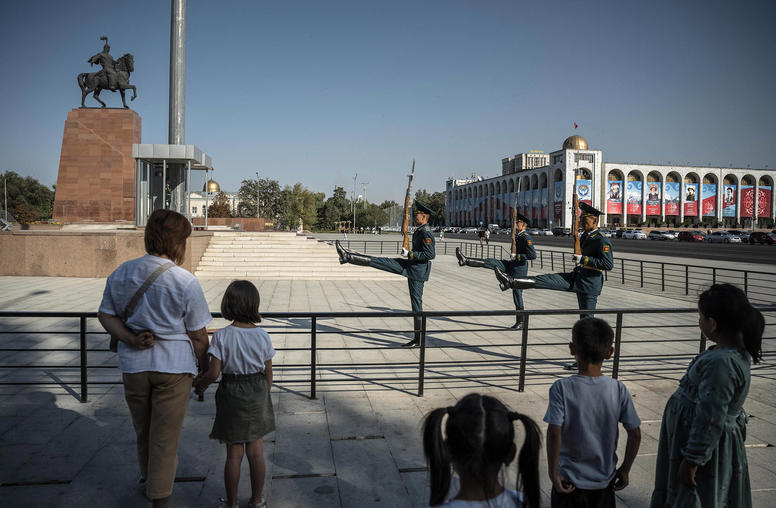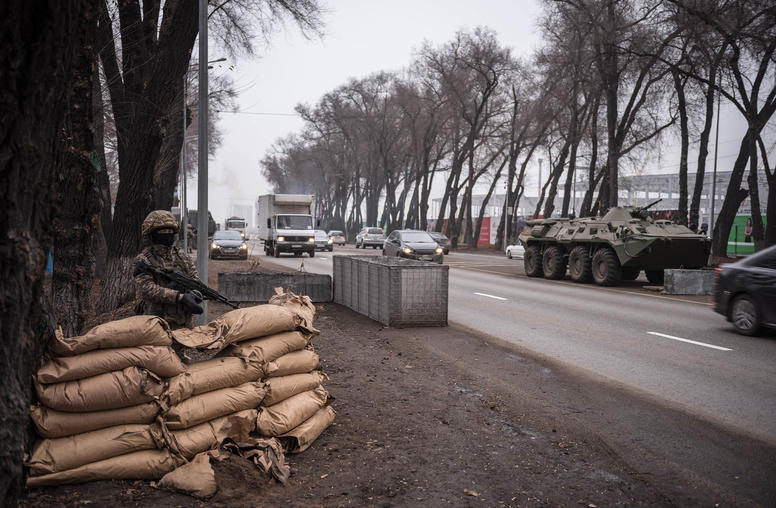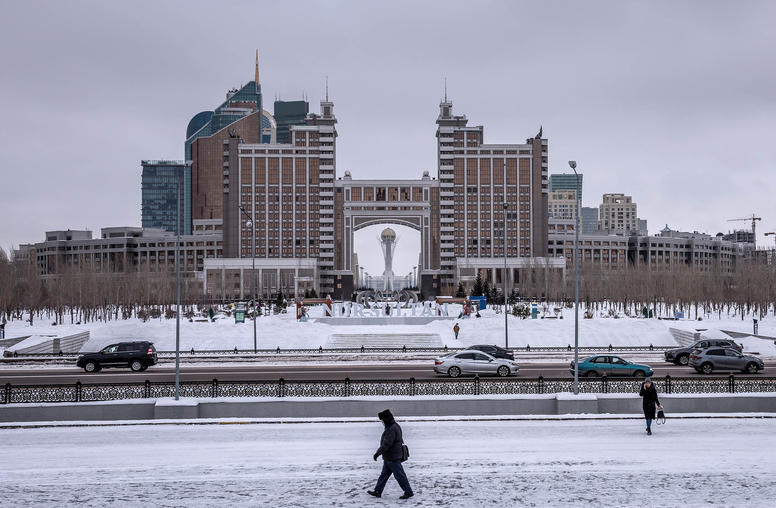Crisis in Kyrgyzstan: Perspectives of Kyrgyz and Uzbek Youth
In an effort to bring the youth voice to the policy conversation, this panel event featured perspectives from members of the Kyrgyz and Uzbek youth diaspora, as well as from young scholars who have researched the role of social media in conflict and peacebuilding, including the role of youth diaspora groups.
Event Summary: Social Media Play Positive and Destructive Roles in Kyrgyzstan Conflict
In June 2010, violence in southern Kyrgyzstan between Uzbeks and Kyrgyzs resulted in the deaths of at least 400 people, the relocation of some 30,000 ethnic Uzbeks from Kyrgyzstan to Uzbekistan, and the internal displacement of roughly 400,000 people.
During the conflict, online communities flooded social media sites with both accurate and inaccurate information concerning the violence. While some young people used social media to post their needs and find resources, others fueled the conflict with ethnic judgments and hateful words.
To explore the roles of social media and youth during this conflict, the U.S. Institute of Peace held the panel discussion, “Crisis in Kyrgyzstan: Perspectives on Kyrgyz and Uzbek Youth” on August 17th.
“Forums and discussions were used to spread radical hatred and to spread sporadic misinformation,” said Anand Varghese from the Center of Innovation for Science, Technology and Peacebuilding. “Some people provided help, but these were just drops in a sea of racial discrimination.”
Varghese pointed out that online communities helped coordinate movements against violence in Kyrgyzstan, identifying that online communities can also play direct roles in peacebuilding. Two of the panelists, U.S.-based attorney of Kyrgyz and Uzbek origin, Damira Kamchibekova, and Ermek Adylbekov, a native of Kyrgyzstan, shared their personal connections to the conflict.
During the conflict, Kamchibekova heard from her relatives living in Osh—Kyrgyzstan’s second largest city and located in the southern part of the country, where much of the ethnic clashes occurred.
Her relatives told her how many houses were set on fire, and mobs and officers took to the streets. Kamchibekova then relayed this information to her Kyrgyz and Uzbek friends via Facebook and e-mail.
Both Kamchibekova, an attorney at Kalbian Hagerty LLP, and Adylbekov, a Muskie fellow at the University of Missouri-Columbia, are members of diaspora groups in the United States, and followed developments in their home countries via Facebook and other social media.
Adylbekov pointed out, “Osh is the youngest city in Kyrgyzstan according to a recent report by the United Nations Development Programme...Youth were both the attacking and the attacked group; they provoked and fueled the conflict."
Youth used social media to frame the issues both negatively and positively. Adylbekov pointed out that youth created groups on Facebook, such as “The April 7th Fund,” the “Kyrgyz-Uzbek Peace Initiative” and “I Want Peace in Kyrgyzstan,” to raise money and awareness of the situation of those in Kyrgyzstan.
In addition to Varghese, other panelists from USIP included Stephanie Schwartz from the Center for Mediation and Conflict Resolution, and Jonas Claes from USIP’s Center for Conflict Analysis and Prevention. Kathleen Kuehnast, USIP’s gender adviser, moderated the discussion.
While analysts have given a variety of reasons for the recent outbreak of conflicts, some cultural, some economic, and some psychological—Claes said it is mostly a combination of these factors.
Claes, who recently wrote the Peace Brief, “Preventing Conflict in the ‘Stans," provided a short overview on the history of Kyrgyzstan and the recent conflict. Claes said Kyrgyzstan has been considered a “poster child in the field of democracy” in comparison to neighboring countries since gaining independence from the Soviet Union in 1991. However, recent conflicts in the southern region have prompted questions of the status of peace and democracy in this country. Historically in Osh and other southern cities, Uzbeks have been in the majority.
Schwartz said by helping youth diaspora connect to those in their country of origin, it is her hope these youth will develop a greater understanding of those living in conflict zones and learn how to amplify their impact for positive social change.
Schwartz recently authored the book, “Youth in Post-Conflict Reconstruction: Agents of Change,” which discusses the important role youth in peace processes both in the United States and overseas. During USIP’s Youth Diaspora conference this summer, youth from Sri Lanka, Nigeria, Iraq and Haiti gathered to talk about ways they could promote peace through social media, and other “non-traditional” and creative avenues. These included hip-hop and freestyle.
Based on her research, Schwartz remarked that, “The important thing for reaching young people is giving the opportunity to be involved in the peace process… We are trying to emphasize how to help them learn how to create a strong network within their social network.”
Varghese, who works on USIP’s Blogs and Bullets project, said that youth also used social media like Facebook to reach out to the international community and build social networks for peace. “Youth groups online are performing like traditional civil society organizations,” said Varghese. “But, online platforms are also spontaneous, fluctuating and transient.”
Varghese noted that the conversations over Twitter, Facebook and other social media during the June conflict demonstrated how new media are being used for cross-cultural communications as well as for collective action among diverse groups. Varghese added there is a potential for this online discourse to influence peacebuilding.
Claes observed that with many unanswered questions about the roots of the conflict, social media and youth diaspora play important roles in filling existing information gaps.
“They serve as an alternative medium through which different information can flow, so policymakers can take more informed decisions,” said Claes. “Analytically speaking, new technologies and youth diaspora serve as a medium, the conditional variable allowing deeper grievances or conflict dynamics to materialize. For better or worse, they are an intrinsic part of the analysis, and an important element of any strategy aimed at preventing the next round of violence.”
Speakers
- Ermek Adylbekov
Muskie Fellow
University of Missouri-Columbia & Open World Leadership Center - Jonas Claes
Program Specialist, Center for Conflict Analysis and Prevention
U.S. Institute of Peace - Damira Kamchibekova
Associate
Kalbian Hagerty LLP - Stephanie Schwartz
Program Specialist, Center for Mediation and Conflict Resolution
U.S. Institute of Peace - Anand Varghese
Program Assistant, Center of Innovation for Science, Technology, and Peacebuilding
U.S. Institute of Peace - Kathleen Kuehnast, Moderator
Gender Advisor, Gender and Peacebuilding Initiative, Centers of Innovation
U.S. Institute of Peace



